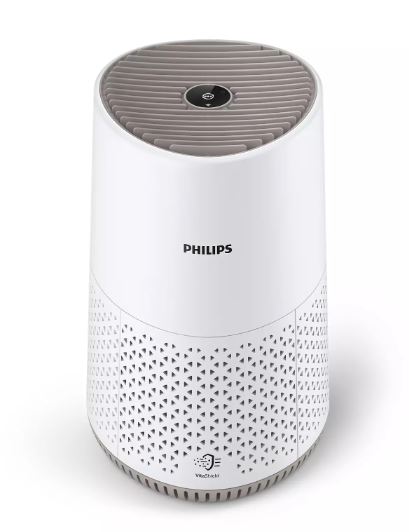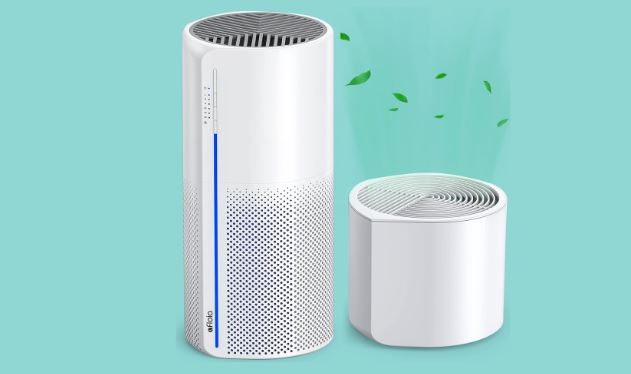Is Your Home Making You Sick? The Importance of Indoor Air Quality
Is Your Home Making You Sick? The Importance of Indoor Air Quality
Blog Article
In a health-conscious world, the quality of the air we breathe has taken center stage for individuals across the globe. With increasing environmental pollution and a better understanding of the impacts of indoor air quality on our health, it's no surprise that the air purifier industry is experiencing tremendous growth.
Air purifiers are appliances that remove contaminants from the air in a space, improving indoor air quality. They are especially advantageous for individuals suffering from allergies, asthma, and respiratory conditions as they can significantly reduce the amount of allergens, pollutants, and irritants in the air. Even healthy individuals can take advantage of air purifiers, as they provide reassurance and safeguard against airborne diseases.
This comprehensive overview will dive deep into the world of air purifiers, examining their advantages, the array of models available, key considerations when selecting the right model, and optimizing your purifier's performance. By the end, you should have a solid comprehension of air purifiers and be able to decide confidently about whether investing in one is the right choice for you and your family.

Understanding Air Pollutants and Their Effects on Well-being
To grasp the importance of air purification, it's essential to grasp the variety of contaminants they address and the likely impact of exposure to these contaminants.
Indoor air pollutants can be broadly grouped into three main types:
- Particulate Matter: This includes tiny solid and liquid particles floating in the atmosphere. Examples include smoke, dust, pollen, pet dander, and mold spores. Particulate matter can cause respiratory issues and trigger allergic reactions.
- VOCs: A Concern for Indoor Air: VOCs are gaseous compounds released from solids and liquids. Sources of VOCs include aerosol sprays, cleaning products, paints, and pesticides, among others. Exposure to VOCs can lead to eye, nose, and throat irritation, headaches, and nausea.
- Biological Contaminants: These include bacteria, viruses, mold, and mildew. They can cause a range of health issues, from allergy symptoms to more serious health risks.
The consequences of exposure on human health can differ considerably. For those suffering from respiratory ailments or weakened immune systems, exposure to indoor air pollutants can lead to serious health issues. Even for healthy people, chronic exposure to certain pollutants can impact respiratory health and overall well-being over time.

Unraveling Air Purification Technology
Air purifiers use a range of physical and chemical mechanisms to effectively eliminate contaminants. Understanding the fundamental processes employed by purifiers will help you appreciate their effectiveness and the array of models on the market.
Here are the core processes and cutting-edge technologies used in air purifiers:
- Filtration Excellence: This is the most common method used in air purifiers. It involves using filters to trap particles as air is passed through the filtration system. The filtration media varies, each designed to capture specific types of particles. For example:
- Pre-filters: The First Line of Defense: These are usually the initial barrier, catching larger particles like dust and hair.
- HEPA (High-Efficiency Particulate Air) filters: HEPA filters are remarkably proficient at trapping tiny particles, including bacteria, viruses, pollen, and dust mites. To be labeled a true HEPA filter, it must effectively capture particles as small as 0.3 microns, with a minimum efficiency of 99.97%.
- carbon filtration: These filters are designed to reduce VOCs and odors.
- Ionizers: Ionizers use charged particles to create an abundance of negative ions, which attach themselves to particles in the air. The particles become charged, causing them to stick to surfaces or the purifier.
- Ozone's Double-Edged Sword: Some air purifiers use ozone, a powerful oxidant, to break down pollutants. While effective, excessive ozone exposure carries risks so these types of purifiers should be used with moderation and in well-ventilated areas.
- UV Light: Shining a Light on Purification: UV light can be used to destroy biological contaminants like bacteria, viruses, and mold spores. UV light is commonly paired with filtration to capture particles first, followed by UV light to neutralize any remaining biological threats.
Choosing the Right Air Purifier
With a plethora of options available, selecting the right air purifier can be a difficult decision. It's important to consider multiple factors to ensure you make the correct choice for your unique requirements and space.
Here are some essential factors to weigh:
- Considering Room Size: Air purifiers are typically rated for specific room sizes, so it's important to choose a model that can effectively handle the square footage of the room. Most purifiers will list a maximum room size or a Clean Air Delivery Rate (CADR), which indicates the rate at which it can deliver clean air.
- Targeted Pollutants: Identify the specific pollutants you want to target. If you suffer from allergies, look for a purifier with a true HEPA filter. For eliminating odors, consider a model with a carbon filter. If you're concerned about pathogenic microorganisms, a purifier with UV-C light might be best.
- Noise Level: Air purifiers can produce a range of noise outputs, so if you plan to use it in a bedroom or quiet space, look for models with a quiet mode for undisturbed rest.
- Long-term Considerations: Consider the regular maintenance and associated costs of the purifier. HEPA filters generally require replacement every 6 to 12 months, depending on use and environmental factors. Factor in the cost of replacement filters when making your choice.
- Smart Innovations: Many purifiers offer smart features like automatic modes, air quality monitoring, and wireless control, allowing remote control and monitoring. These features can improve your purifier's performance and ease of use.
Unlocking the Full Potential of Your Air Purifier
Once you've chosen and set up your air purifier, there are several things you can do to ensure it operates at optimal levels and delivers the greatest advantages:
- Strategic Positioning: Position your purifier in an open area, away from walls and furniture, to ensure optimal airflow. Avoid placing it near windows or doors as drafts can interfere with its performance.
- Consistent Use: For the best results, it's recommended to run your purifier around the clock. Many models have automatic or low-power settings that respond to air quality changes, so you can maintain clean air without running up a huge energy bill.
- Regular Filter Care: Regularly check and replace filters as recommended by the manufacturer. Over time, filters become clogged with particles, reducing the purifier's efficiency. Set a reminder for filter changes so you don't forget.
- Minimize Indoor Pollutants: Alongside using an air purifier, take steps to reduce indoor pollutants. This could include vacuuming, dusting, choosing natural cleaning alternatives, and limiting aerosol and chemical products. Report this page